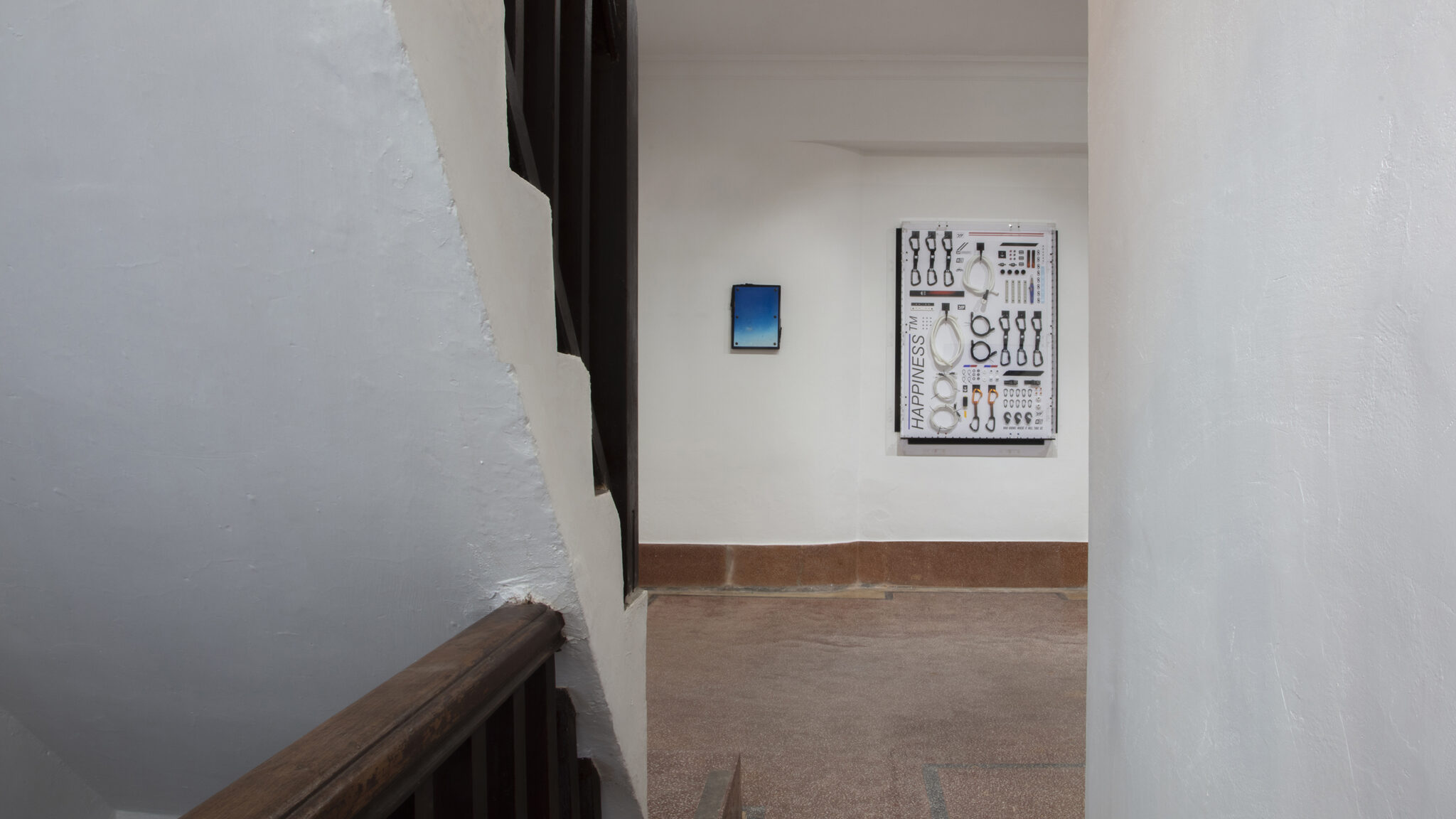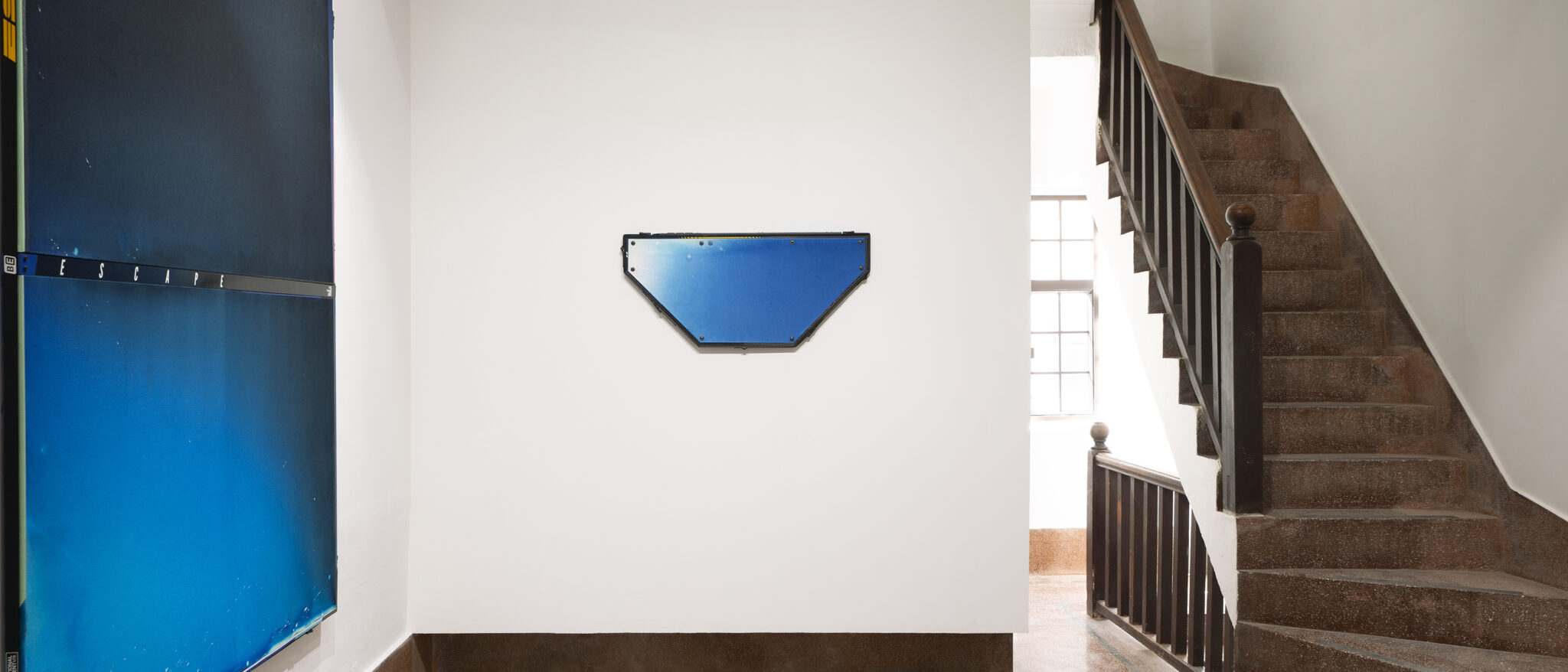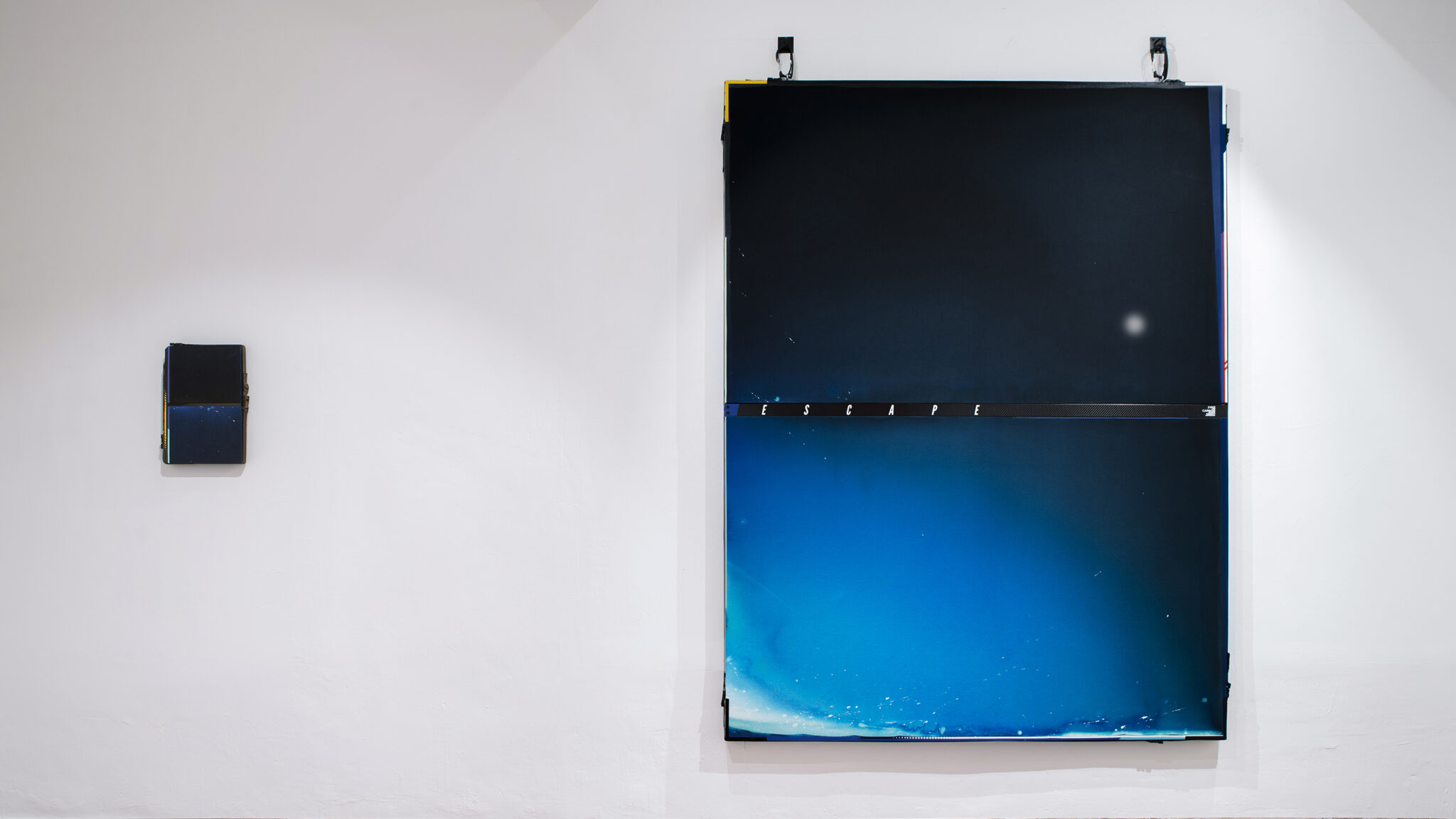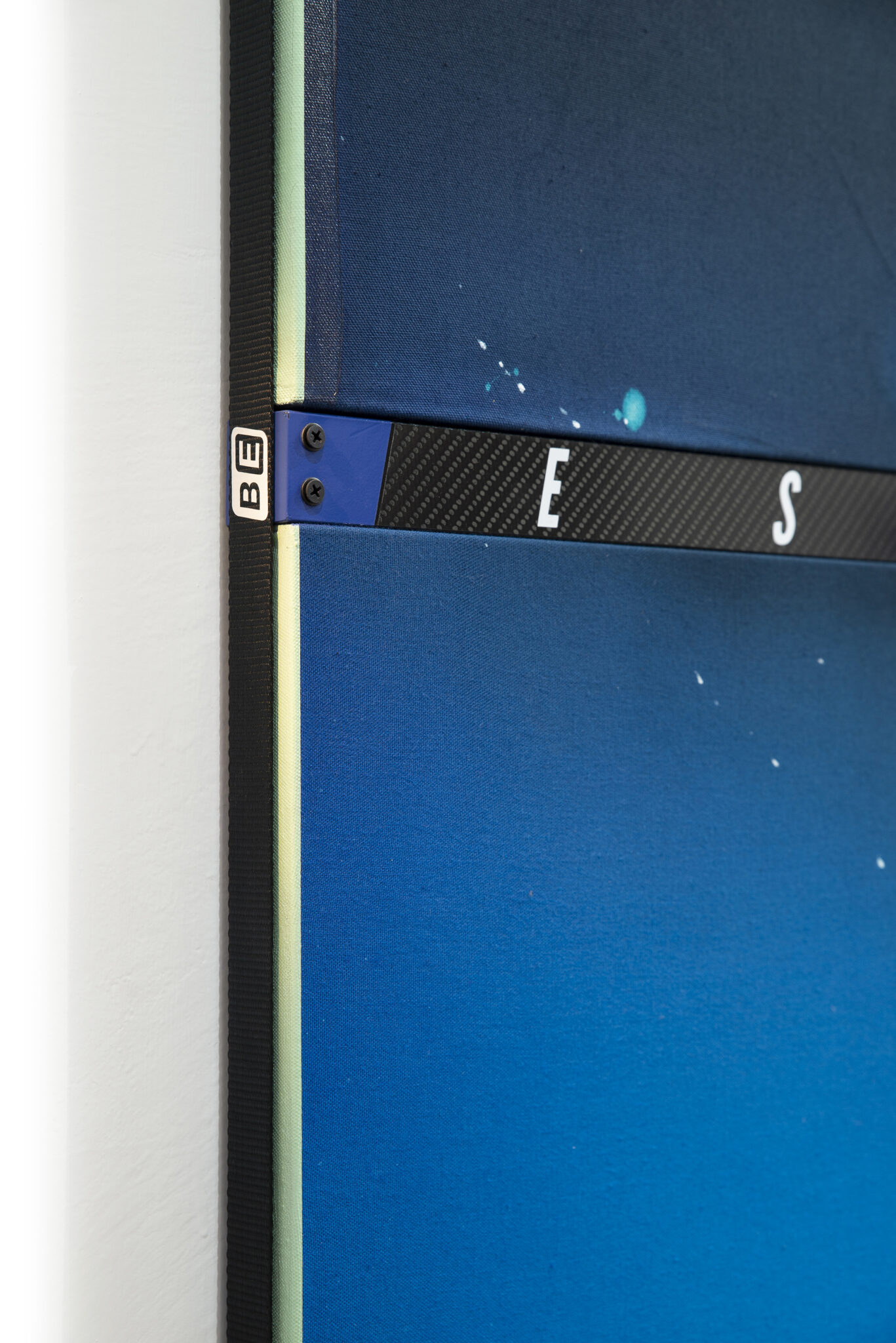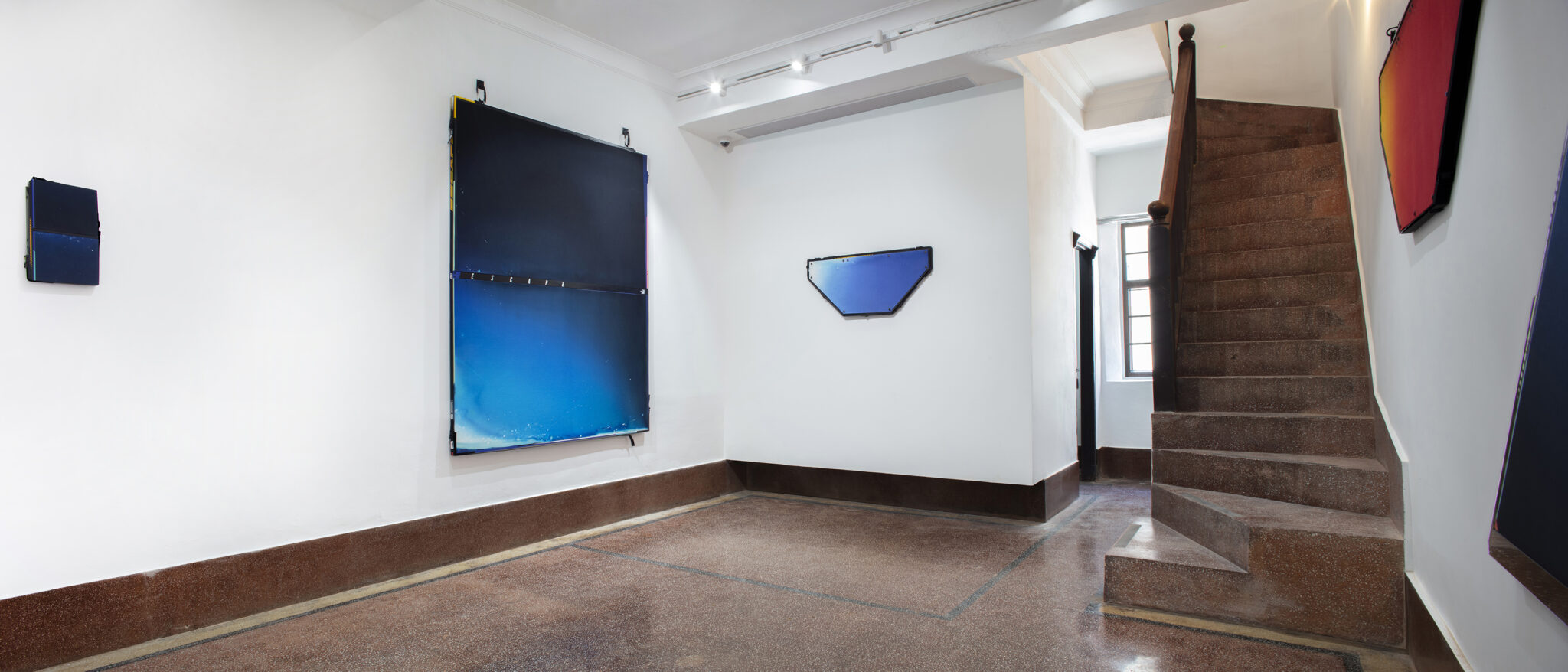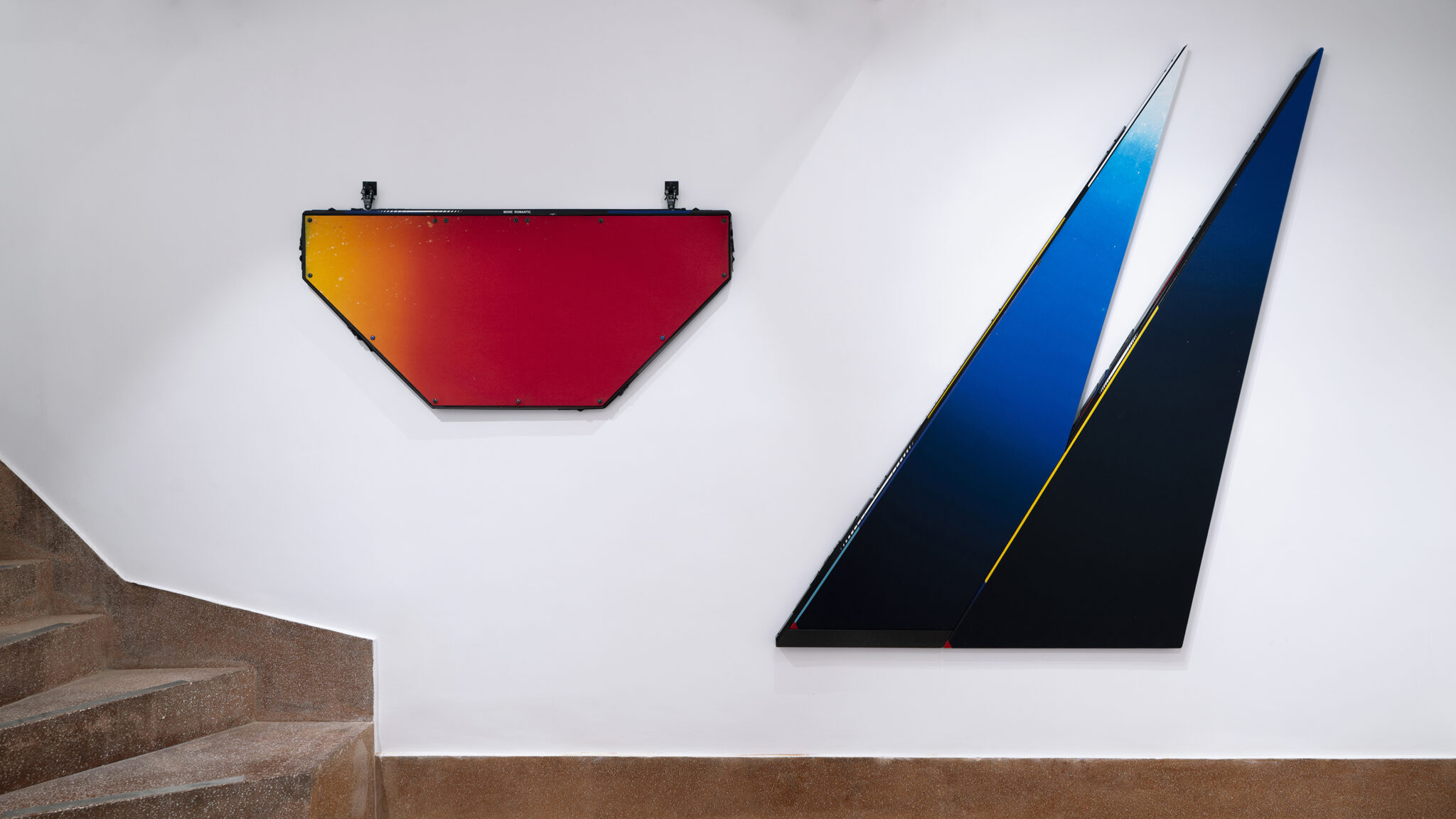HAPPINESS TM
Grappling with contemporary manifestations of mythology and systems of belief, the work of Ben Edmunds is chiefly characterised by its combining the “holy” formal modes of Modernist Abstract Expressionism, colour field painting and Minimalism, with the highly stylised and contemporary accents of extreme sports and hi-tech fashion. Out of this synthesis of celebrated iconographies, Edmunds treads a precariously fine line between cliché and a sincere acknowledgement of human desire. Because desire here is undeniably a fundamental currency of the paintings; underwritten in the dyed canvases, the handmade carbon fibre components, the carabiners and short incidents of text, is an implicit understanding that we are unsatisfied – that as an artist and as a viewer, we approach the world around us impoverished and in need of moralising, rationalising sustenance. In an energetic environment of fashions and trends, of juice-clenses and cross-fit, Edmunds’ paintings appeal to the “desiring-body”, to the appetite of the consumer who needs experiences more than they need objects.
It is in this vein that Edmunds’ paintings should be, at times, skeletal, in a state of balance, held together by shock cords and clips, climbing equipment and sailing gear, the materials of activity and leisure. These are paintings whose sentimentality is now structurally bound to their material. Just as magazines and advertising plug their products through their respective journals of desire, Edmunds’ paintings combine the vaunted status and materiality of painting – its Romanticism and anti-utilitarianism – with the practicalities and nominal status of the hobbyist who searches for meaning through private, self-worshipping acts.
Growing up in rural England, Edmunds was surrounded by a culture of outdoorsmanship, part of a family keen on sailing, windsurfing and mountain biking. This cocktail of middle classism and athletic pursuits in turn nurtured an awareness of banality and mythology that pervaded a culture of “work and play”, informing the creation of Edmunds’ paintings that channels the latent escapism of the health and wellness movements, of travel magazines, of popular entertainment and the fiction of the Romantic artist. Employing the archetypes of Modernism in this fashion, therefore, Edmunds’ work places painterly style and technique at the forefront of this project to stylize and mythologize the art object. Most significantly by eliciting the divine appearance of Mark Rothko, Barnett Newman, Helen Frankenthaler and Ad Reinhardt, in addition to the work of Manolo Millares, Frank Stella and Richard Tuttle, the ecstatic colours and dyes, bare stretcher bars and taut canvases of Edmunds’ paintings consistently stereotype artistic style – knowingly “updating” the avant-gardist deconstruction of the canvas with high-tech materials, slick colour schemes alongside titles that nod to the motivational therapeutics of self-help books and life coaches.


